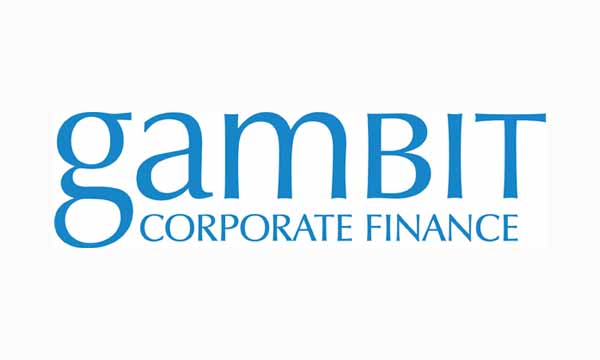
The operational demands of running a business can be all-consuming. Owners are caught up in the challenge of the present, often in denial of what needs to happen for their firm – in which they have taken many risks and made huge sacrifices, often over many decades – to transition when the time comes to relinquish control.
But succession is more than simply a stage in the business cycle. It is core to its ongoing longevity, albeit dependent on the stewardship of subsequent owners.
From a wider economic perspective, transitions to external buyers are particularly attractive. Buyers, whether financial or trade, will expect several-fold returns on funds invested in acquisitions. As a result, sustained returns on acquisitions are achieved by focusing on new operational growth initiatives, which underpins additional investment in job creation and purchasing capital assets.
Our 24 years of research on disclosed ownership exits by companies across Wales demonstrates that these transitioned companies do not leave Wales. Indeed over 80% are still in situ and active and this is due to a committed workforce, supply chain reliance and investment from buyers in equipment and systems on site. These companies may no longer be owned by Welsh shareholders, but they remain grounded in Wales and add significant incremental value to the local economy.
Contrast this with an alternative and increasingly “in vogue” option for selecting suitable owners via an Employee Ownership Trust (“EOT”). In its basic form, the EOT was designed to provide a seamless transition and protect business legacies by passing ownership of the business to employees via a trust. In certain situations or sectors, this has its attractions, particularly where there is a community or employee dependency constraint. Or, more bluntly, situations where the business is unlikely to secure a trade or financial buyer, even though they are great businesses. This is often the case in smaller niche consultancy businesses with loyal client bases, where an independently structured EOT is more viable.
After all, the theory goes, subject to affordability, the increased employee engagement and retention post EOT with motivational financial incentives should underpin a positive outcome, particularly for the exiting owners where there is a very generous capital gains incentive of no tax payable, unlike other change in ownership transactions – whilst the Trust that holds the shares on behalf of the employees pays an income tax free bonus of up to £3,600 from a share of its profit.
The self-administered EOT transition allows for sellers to gear the business with loans in lieu of the amount due for the share sale, payable over many years out of cash generated by the business’ earnings.
However, in its purest form, avoiding external intervention from a financial provider, the EOT transaction has the potential to cause financial strain or restrict investment for business growth while paying off the monies due to exiting owners. In fact, HMRC released proposals on reforming EOT rules to prevent former company owners retaining majority control of the employee ownership trust which have yet to be changed.
You might ask why does this differ from a traditional Management Buy Out (MBO)? There are three key differences.
Firstly, in a MBO the management team is party to the negotiated sale value and usually contribute some of their own cash into the deal – and typically external funding acts as a limiter on what is affordable, which is subjected to external due diligence and scrutiny on viability. An Employee Share Option Scheme can be introduced to bind the whole workforce with real shareholders' interests and benefits.
Secondly, under an EOT, the employees are not shareholders as the Trust is the legal owner of the shares; the future unravelling of this structure for a subsequent sale is a complex tax and legal challenge. We have only come across one disposal of an EOT to a private equity acquirer, which shows how challenging this can be in practice.
Thirdly, there is something of “the tail wagging the dog” as the nil tax incentive for sellers is often the overriding priority in selecting an EOT, which from a risk perspective makes questionable commercial sense. You might think this is just another opinion, yet recent data and case studies reveal mounting examples of post-EOT business casualties, either in a decline in trading or, more alarmingly, where businesses have crashed into a post-EOT insolvency.
Since 2020, companies who have undergone an EOT with a combined turnover of £1.3 billion have ceased trading due to the cash flow pressures of financing, with the knock-on impact of reducing companies’ ability to withstand adverse economic factors, which are intrinsically linked.
The last three high profile EOT transitions (Buckingham Group, Readie Construction and Michael J Lonsdale) have entered administration with combined pre-tax losses of £4.7 million whilst EOT payments of c.£34 million were made.
Closer to home, Paramount D&B, a 30-year successful office and construction fit out company was sold to management in a traditional MBO and subsequently transferred to an EOT and went into administration in 2024 as result of financial pressures.
One might point out that these examples are all in the construction sector, but in many ways therein lies the point. Is the EOT the most suitable route for companies in this sector or is it because getting buyers or funders involved is a challenge and extracting tax effective shareholder value is a priority? In any event, there have been EOT failures in other sectors too and discussions with Insolvency Practitioners with UK coverage substantiated this, for example the Cardiff based S3 Advertising whose clients included S4C, Public Health Wales and Deliveroo.
Additionally, given that under many EOT arrangements the exiting shareholders are paid out in the future, they must continue to bear the effective economic risk of the future trading performance of the business which, as we have seen, is often at much greater risk post-EOT. In contrast, receiving a significant proportion of total proceeds on Day 1 from an external buyer would clearly be preferable from a time-value-of-money perspective.
Wales needs to be wary of developing a fixation on promoting the EOT as a primary model for SME succession and become less insistent on prioritising Welsh ownership – otherwise there is a risk of burying these businesses in the Principality.
The focus needs to be on adopting a longer-term, ambition-led, strategy to help and encourage indigenous companies to continue their growth trajectory from small to medium entities and allow the market to determine what is the optimum means of scaling businesses and preserving economic impact.
Thankfully, most owners, when presented with all the available options, are instinctively selective in choosing the best transition route to follow, whilst prioritising the preservation of the jobs of those that helped them on the journey. This after all is their legacy.






